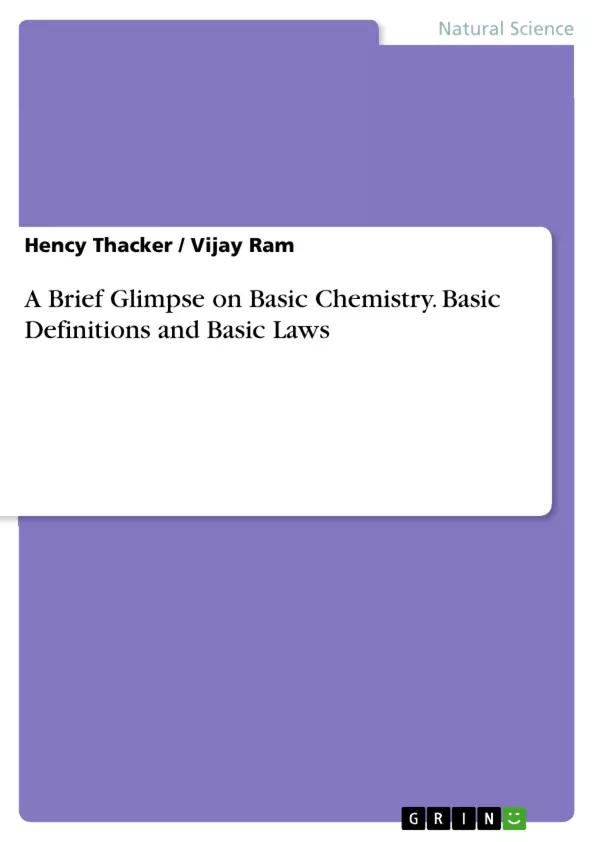This book is an approach for compilation and making a handbook in very simple and easy language to very commonly used terms in chemistry for higher secondary, under-graduate and post graduate students.
Many times we are familiar with some terms but at certain times like competitive examinations, interviews, and so on it just need a glimpse to all these so as to revise it. This book provides a highlight to almost all basic terms used in chemistry from higher secondary education to post graduation. It tries to cover all basic definitions and basic laws important for interviews, college exams, competitive exams and other such events.
This has been designed in simple language and colorful way so as to help students during end-time revision and reducing their quality time to be wasted on searching such basic terms from various sources.
Inhaltsverzeichnis (Table of Contents)
- PREFACE
- AUTHOR AFFILIATIONS
- CHAPTER-1 BASIC DEFINITIONS IN CHEMISTRY
- CHAPTER-2 BASIC LAWS OF CHEMISTRY
- REFERENCES
Zielsetzung und Themenschwerpunkte (Objectives and Key Themes)
This handbook aims to provide a clear and concise overview of fundamental concepts in chemistry for students at various levels, including higher secondary, undergraduate, and postgraduate. It emphasizes simplicity and accessibility, making it suitable for revision purposes, competitive examinations, and interviews.
- Basic definitions in chemistry
- Fundamental laws governing chemical reactions and phenomena
- Quantitative analysis and concentration concepts
- Chemical terminology and its application
- Simplified explanation of complex chemical concepts
Zusammenfassung der Kapitel (Chapter Summaries)
- Chapter 1: Basic Definitions in Chemistry This chapter introduces key definitions and terminology fundamental to the study of chemistry, including atomic number, mass number, qualitative and quantitative analysis, equivalent mass, and various measures of concentration (normality, molarity, molality, formality, and weight %). Each definition is clearly explained with examples to enhance understanding.
- Chapter 2: Basic Laws of Chemistry This chapter delves into fundamental laws that govern chemical reactions and phenomena. It explores principles such as the law of conservation of mass, the law of definite proportions, the law of multiple proportions, and the law of reciprocal proportions. Each law is presented with illustrative examples and explanations, highlighting its importance in the field of chemistry.
Schlüsselwörter (Keywords)
The primary focus of this text is on providing a comprehensive overview of basic definitions and fundamental laws in chemistry, covering essential terms and concepts relevant to students pursuing higher secondary, undergraduate, and postgraduate studies. This includes topics such as atomic structure, chemical reactions, stoichiometry, chemical analysis, and quantitative measures of concentration.
- Quote paper
- Hency Thacker (Author), Dr. Vijay Ram (Author), 2019, A Brief Glimpse on Basic Chemistry. Basic Definitions and Basic Laws, Munich, GRIN Verlag, https://www.grin.com/document/507297



